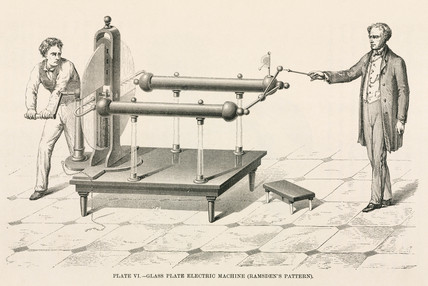 Besides many research related posts on this weblog, there is another important aspect in universities: education. Currently the spring examinations take place. It is time to see if our efforts in introducing the students into the exciting world of transistors were good enough. Today I was supervising a retake of a first year BSc-course. In order not to get too bored, I printed out a bunch of papers to read through…
Besides many research related posts on this weblog, there is another important aspect in universities: education. Currently the spring examinations take place. It is time to see if our efforts in introducing the students into the exciting world of transistors were good enough. Today I was supervising a retake of a first year BSc-course. In order not to get too bored, I printed out a bunch of papers to read through…
Despite the reading material, I was preparing for a long morning. But nothing could be further from the truth! While the students were sweating and battling their way through the exam, I picked up a paper about the history of electrical stimulation [1]. It was discussing about the very first steps of electricity for medical applications. As it turns out, soon after the development of the first electrical devices in the second half of the 18th century (such as static electricity machines, the Leyden jar or later the volta-cell), these devices were put in use for medical research very soon. Just like myself today, people were fascinated by how our body responds to electricity.
It is incredible to read what achievements were made with the extremely limited equipment that was available. Even more incredible were the experiments that were carried out: the effect of electricity on the human body was demonstrated using the decaptivated heads of executed criminals! Furthermore the functionality of pacemakers was demontrated by over-anesthesthetized animals until cardiac arrest occured, to subsequently reanimate them using electrical stimulation. Remarkably the method was also applied to a human subject, but without success…
Besides experiments, the inguinity of researchers to build machines is very remarkable. Without the availability of vacuum tubes (let alone transistors), it is hard to make pulses with accurate duration in the order to hundred milliseconds (which are required for stimulation). Various mechanical systems are described, of which the most remarkable one is a system in which a gun is fired to cut two wires placed at a certain distance from each other. Only during the time the bullet is travelling from the first wire to the second, the system is injecting electrical energy into the tissue. Imagine how being a researcher was like in those days: shooting rifles the whole day! Quite a difference from running circuit simulations like we do today!
For more interesting stories I can highly recommend to read this paper. Or save it for when you have to supervise an exam. For now: time to check the exam!
Marijn
[1] Geddes, L.A., "The first stimulators-reviewing the history of electrical stimulation and the devices crucial to its development", Engineering in Medicine and Biology Magazine, IEEE , vol.13, no.4, pp.532-542, Aug/Sep 1994

One response to “Thoughts over an exam…”